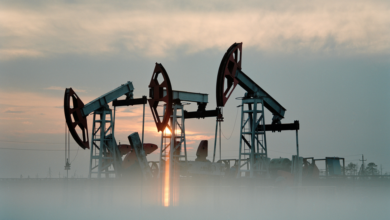
Leading the ranking of countries with the worst record on fossil fuel finance to remain, in order, Japan, Canada, Korea and China
(Sustainabilityenvironment.com) – They talk about renewables but open their portfolios twice as often for coal, oil and gas. G20 countries do not give up on fossil fuel finance, imitated by the main development banks. Between 2019 and 2021, these actors spent an average of $55 billion a year on fossil fuels but only half ($29 billion) on clean energy. This is in breach of promises to completely stop funding for fossils by the end of 2022, which had been advanced during the COP26 in Glasgow a year ago.
The trend of fossil fuel finance is improving but the problem is that the investment curve in renewables remains flat, explains a report by Oil Change International and the US branch of Friends of the Earth, which has collaborated with dozens of global NGOs including Legambiente. Between 2016 and 2018, in fact, fossil finance reached an average of 86 billion $ a year, while that for renewables stopped at 27 billion $ . In practice, the same level of investment in wind and solar was recorded in the following 3 years. In addition, the slowdown in fossils is mainly due to the implementation of the new EIB policy. But data from early 2022 indicate that the downward trend may stop.
Fossil fuel finance at full throttle
The main rock is the gas. Still considered a transitional energy par excellence, the data from the report At a crossroads: assessing G20 and MDB international energy finance ahead of stop funding fossil pledge deadline. “53% of international public funding known for fossil fuels went to fossil gas projects between 2019 and 2021,” the authors point out, noting that “these 30 billion dollars per year are higher than those received by any other type of energy between 2019 and 2021 and all funding for clean energy“.
Among the subjects placed on the index for the worst performance are export credit agencies, such as the Italian SACE. They provide 7 times more money to fossils than to renewables: $34 billion a year against $4.7 billion. Another interesting data that emerges from the report is the geographical destination of investments. In practice, finance travels from the richest countries to other countries with advanced economies. Among the 15 largest recipients of fossil finance, the only low-income country is Mozambique. The same dynamic applies to investments in renewables.
Read also The mechanism on loss and damage? Fossil profits are enough to finance it 60 times
Leading the ranking of countries with the worst record on fossil fuel finance to remain, in order, Japan ($10.6 billion), Canada (8.5), Korea (7.3) and China (6.7). At the opposite extreme, those who invest more in renewables are France ($2.8 billion), Brazil (2.5) and Germany (2.3). Saudi Arabia and Russia, are the two heavyweights of the cartel of oil exporting countries Opec+. Above all, it is almost 90% of all energy investments, since for renewables have been allocated just 112 million $.





